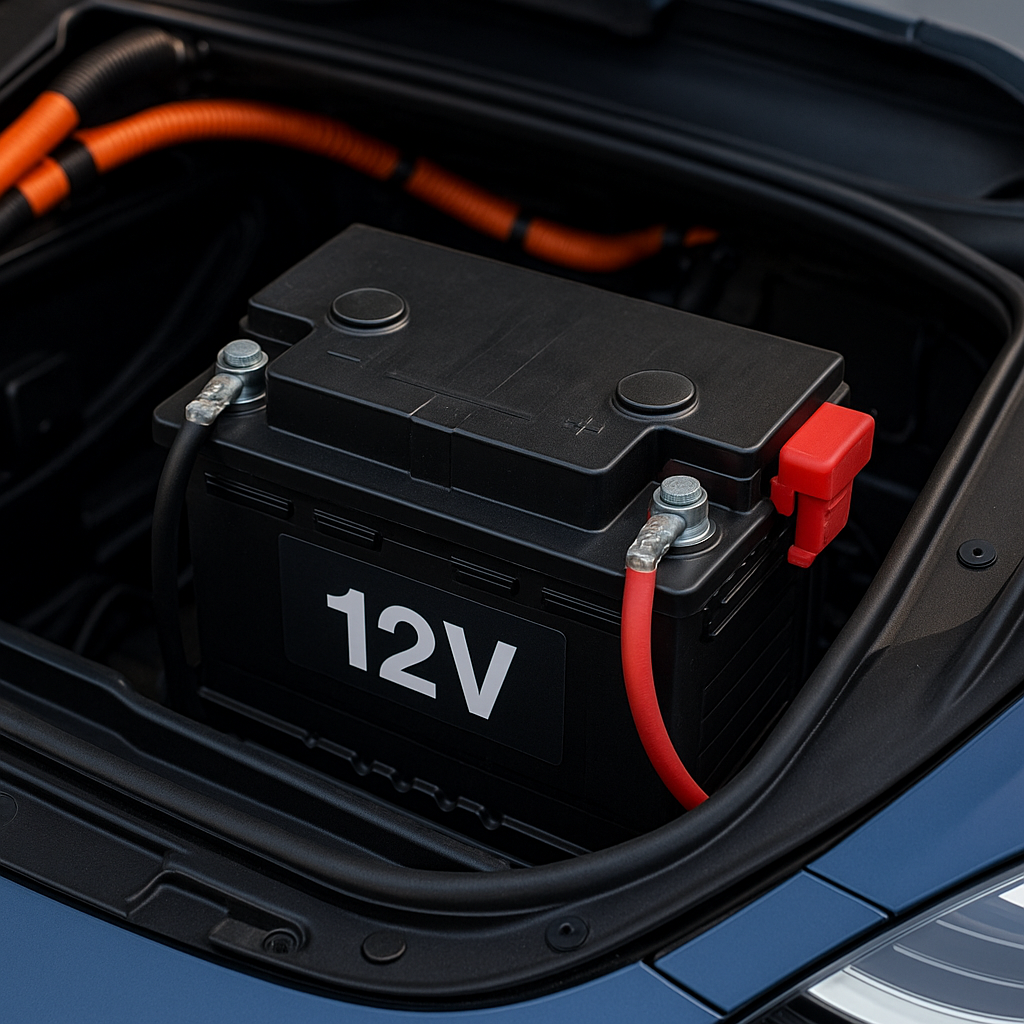Hook: Think electric vehicles run solely on high-voltage traction packs? They still rely on a trusty EV 12v battery to power lights, locks, infotainment, and safety systems. In this guide to electric car maintenance basics, we’ll uncover why that small battery matters and how to keep it healthy.
- Explore the role of the 12-volt battery in modern EVs
- Learn how the 12v system is charged and managed
- Get practical maintenance tips and avoid common failure modes
Why Electric Cars Still Have a 12-Volt Battery
Although the main traction battery handles propulsion, the EV 12v battery runs all low-voltage accessories and control modules:
- Safety Systems: Airbags, ABS, electronic stability control.
- Body Electronics: Door locks, windows, wipers, lighting.
- Infotainment & Controls: Touchscreen, audio, digital instrument cluster.
- HVAC & Comfort: Climate control blowers, seat heaters, power seats.
Using a separate 12-volt circuit isolates accessory loads from the high-voltage pack and simplifies vehicle architecture by reusing automotive-standard components.
How the 12-Volt System Works in EVs
1. DC–DC Converter Charging
Instead of an alternator, EVs use a DC–DC converter to step down the high-voltage battery voltage (200–800 V) to 12 V. This converter regulates charging current to maintain the 12v battery at optimal state-of-charge without overcharging.
2. Battery Management & Protection
EV control units monitor the 12v battery’s voltage, temperature, and health. If the voltage drops below a safe threshold, the vehicle may disable non-essential accessories or refuse to start until the battery is recharged.
3. Startup & Sleep Modes
When parked, the 12-volt system enters a low-current sleep mode to preserve charge. Upon “power on,” the converter activates and restores full voltage to accessories before the car’s main systems come online.
Maintenance Tips for Your EV’s 12-Volt Battery
- Regular Health Checks: Many EVs allow monitoring of 12v battery state-of-health via the infotainment system—check monthly for voltage below 12.4 V at rest.
- Keep It Warm: Extreme cold slows battery chemistry. Park in a garage or use a thermal blanket for climates below freezing.
- Minimize Parasitic Loads: Avoid extended accessory use (e.g., lights, climate fan) when the vehicle is off to prevent slow discharge.
- Use Quality Replacements: If replacement is needed, choose AGM or EFB batteries rated for automotive use to handle cyclic loads and regenerative charge pulses.
- Secure Connections: Corroded or loose terminals can cause voltage drops—inspect and clean connections annually.
Common Pitfalls to Avoid
- Ignoring Low-Voltage Warnings: Dismissing accessory glitches or warning messages can lead to complete 12 V failure and leave you stranded.
- Overlooking Sleep-Mode Drains: Leaving aftermarket devices (dash cams, chargers) plugged in can slowly deplete the battery over days.
- Choosing Incorrect Battery Type: Using a flooded lead-acid battery instead of AGM/EFB may result in reduced lifespan under EV charging profiles.
FAQs
- Q1: How often should I replace my EV’s 12-volt battery?
- A1: Most 12 V batteries last 3–5 years in EV service. Monitor voltage and replace if resting voltage falls below 12.2 V or if the car reports reduced battery capacity.
- Q2: Can I jump-start an EV like a gasoline car?
- A2: Yes—you can jump off another 12 V source, but follow the manufacturer’s procedure carefully to avoid damaging sensitive electronics.
- Q3: Will a dead 12-volt battery disable my EV completely?
- A3: Yes—without 12 V power, the DC–DC converter won’t run and the vehicle cannot boot its control systems, even if the high-voltage pack is full.
Conclusion & Next Steps
Mastering these electric car maintenance basics keeps your EV 12v battery in peak condition, ensuring reliable accessory operation and readiness for every drive. Add a quick 12 V check to your regular service routine—your EV’s sophisticated systems depend on it!
